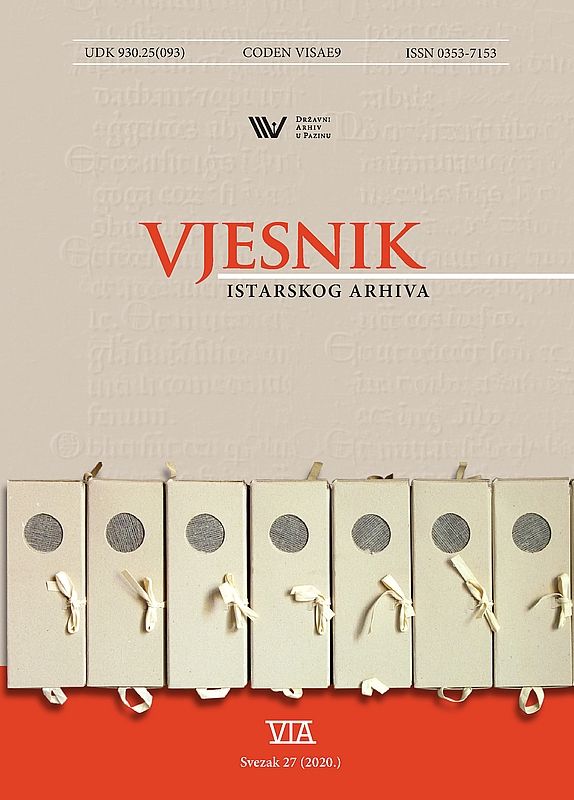Contributions to the history of the Fonds of the Second Austrian Administration kept in the State Archives in Pazin
DOI:
https://doi.org/10.31726/via.27.2Keywords:
Second Austrian Administration in Istria (1814 - 1918), Italian Administration in Istria (1918–1943), State Archives in Pazin, history of archival holdings, archival records, book of acquisitions, general inventory, archival processing and arrangementAbstract
The paper deals with the history of the fonds of the Pazin, Labin and Poreč district administrative and related bodies from the period of the Second Austrian Administration (1814–1918) and reconstructs the professional procedures carried out in the State Archives in Trieste (1927–1961) and the State Archives in Pazin. (1962–1990). After the cessation of the activities of their creators, the material of the bodies of the Austrian district administration continued to be kept in the archives of the Italian subprefectures in Pazin, Poreč and Labin, until their abolition in 1927. After 1927, the first interventions in this material were carried out by the State Archives in Trieste. The selection and weeding of materials was carried out and documented in the premises of the abolished subprefectures, and then the fonds of the Austrian district authorities of Pazin, Labin and Poreč were moved as a whole to the Archives in Trieste. During the Trieste custody (1927 - 1961), the material was rudimentarily recorded, without further interventions. Following the restitution of archives between the Italian Republic and Yugoslavia, the material of the Austrian district administration from the area of Pazin, Labin and Poreč was assigned to the State Archives in Pazin, where further processing was carried out in two major and lengthy phases: The first phase consisted of the basic arrangement (1962–1982), during which the young and insufficiently equipped archives sought to ensure the necessary physical protection of the material, meet the requirements for recording and raise the level of intellectual control over the material that retained the structures formed in 1927. In the second phase (1982–1990), in accordance with all modern professional guidelines, a detailed archival processing was carried out, which resulted in a complete reorganization of historical structures and the organization of fonds as they are today. Based on historical archival documentation, the paper explains the historical stages of processing and recording of archives, establishes and restores broken recording links and interprets changes in the name/title of fonds, the time of creation of individual fonds and the structures of the fonds.
Downloads
Published
Issue
Section
License

This work is licensed under a Creative Commons Attribution-NonCommercial 4.0 International License.

